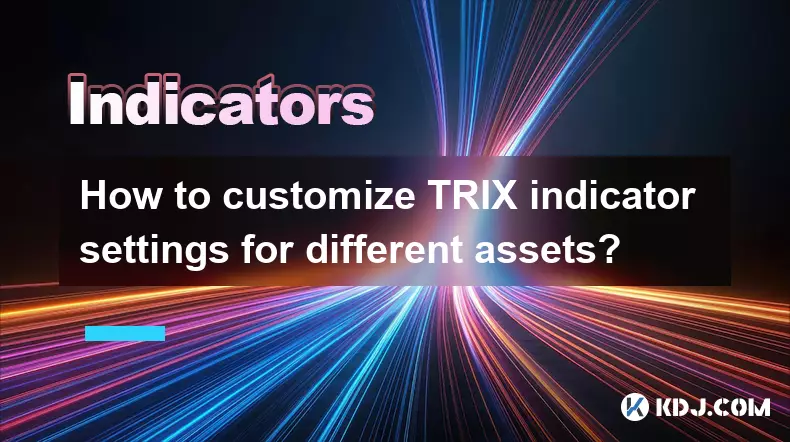-
 bitcoin
bitcoin $100977.009184 USD
-2.05% -
 ethereum
ethereum $3282.009150 USD
-3.23% -
 tether
tether $0.999813 USD
-0.02% -
 xrp
xrp $2.208254 USD
-4.89% -
 bnb
bnb $951.411089 USD
0.55% -
 solana
solana $155.761205 USD
-2.84% -
 usd-coin
usd-coin $1.000217 USD
0.02% -
 tron
tron $0.284475 USD
-1.28% -
 dogecoin
dogecoin $0.162363 USD
-1.53% -
 cardano
cardano $0.533988 USD
-0.47% -
 hyperliquid
hyperliquid $39.174339 USD
-3.22% -
 chainlink
chainlink $14.724828 USD
-1.16% -
 bitcoin-cash
bitcoin-cash $477.297986 USD
-1.28% -
 zcash
zcash $554.227426 USD
17.30% -
 ethena-usde
ethena-usde $0.998995 USD
-0.03%
What is the BOLL and MACD combination strategy?
The BOLL-MACD strategy combines volatility and momentum analysis to improve trade timing in crypto, using band touches and MACD crossovers for high-probability entries.
Nov 07, 2025 at 08:19 am

Understanding the BOLL and MACD Combination Strategy
The BOLL (Bollinger Bands) and MACD (Moving Average Convergence Divergence) combination strategy is a widely adopted technical analysis method in the cryptocurrency trading space. Traders use this dual-indicator approach to identify potential entry and exit points by combining volatility measurements with momentum signals. Bollinger Bands consist of a middle band (SMA) and two outer bands that adjust based on market volatility, while MACD tracks the relationship between two moving averages of price to reveal trend strength and direction.
This strategy becomes particularly effective in highly volatile markets like the crypto sector, where sudden price swings are common. By analyzing both price volatility and momentum shifts, traders can filter out false signals and improve decision-making accuracy. The synergy between BOLL’s dynamic support/resistance levels and MACD’s trend-following capabilities allows for more precise trade setups.
Key Signals Generated by the Strategy
- Price touching or breaking the upper Bollinger Band combined with a positive but flattening MACD histogram may indicate overbought conditions, suggesting a potential reversal or pullback.
- A crossover of the MACD line above the signal line while price is near the lower Bollinger Band often serves as a bullish confirmation, signaling possible upward movement.
- When price moves outside the Bollinger Bands during high volatility and the MACD shows a strong directional shift, it can validate breakout momentum rather than a false spike.
- Divergence between price action and MACD—such as new highs in price not confirmed by MACD—while price is at the upper band strengthens the case for a bearish reversal.
- Contraction of Bollinger Bands (the 'squeeze') followed by expansion, aligned with a decisive MACD crossover, frequently precedes significant price moves, offering early entry opportunities.
Risk Management and Practical Application in Crypto Trading
- Traders should avoid acting on BOLL or MACD signals in isolation; the power lies in their confluence, reducing whipsaw effects common in low-volume altcoins.
- Setting stop-loss orders just beyond the opposite Bollinger Band helps contain losses if the expected move fails, especially during consolidation phases.
- Using higher timeframes like 4-hour or daily charts increases the reliability of MACD crossovers when they align with Bollinger Band extremes.
- Position sizing should be adjusted according to the width of the Bollinger Bands—narrow bands suggest low volatility and potentially explosive moves upon breakout, warranting cautious exposure.
- In ranging markets, mean-reversion trades between the bands gain validity when supported by MACD turning from extreme levels, providing structured entries and exits.
Limitations and Market Context Awareness
- Bollinger Bands do not predict direction—they only reflect volatility, so relying solely on touchpoints without MACD confirmation can lead to mistimed trades.
- MACD is a lagging indicator; its signals are derived from past prices, making it less effective during sudden news-driven spikes unless paired with real-time volatility data from BOLL.
- In strongly trending crypto markets, price can ride along one band for extended periods, misleading traders who expect reversals at band touches without considering MACD trend alignment.
- During major Bitcoin halving events or regulatory announcements, standard BOLL-MACD setups may fail due to unprecedented volume surges, requiring manual override or temporary suspension of automated strategies.
- Altcoins with irregular trading volumes often generate false breakouts that trigger premature MACD signals, making it essential to cross-verify with on-chain metrics or order book depth.
Frequently Asked Questions
How do you adjust BOLL and MACD settings for different cryptocurrencies?Standard BOLL settings (20-period SMA, 2 standard deviations) and MACD (12, 26, 9) work well for major coins like Bitcoin and Ethereum. For more volatile altcoins, increasing the BOLL period to 25 or reducing the deviation to 1.8 can minimize noise. Adjusting MACD to (8, 17, 6) makes it more responsive to rapid price changes typical in meme coins.
Can the BOLL-MACD strategy be automated using trading bots?Yes, many algorithmic trading platforms support scripting this strategy. Bots can be programmed to execute buy orders when MACD crosses above signal line within the lower Bollinger Band zone, and sell when opposite conditions occur. However, constant monitoring is required to prevent losses during sideways chop or flash crashes.
What timeframes yield the most reliable signals?The 4-hour and daily timeframes provide the most dependable confluence between BOLL and MACD signals. Shorter timeframes like 15-minute charts generate excessive false triggers due to market noise, while weekly charts may delay actionable insights in fast-moving crypto markets.
Is this strategy suitable for bear markets?It can be adapted effectively. In downtrends, traders focus on short entries when price hits the upper Bollinger Band and MACD shows rejection from below zero. Mean reversion plays lose effectiveness, so momentum-based follow-through in the direction of the trend gains priority when confirmed by MACD acceleration.
Disclaimer:info@kdj.com
The information provided is not trading advice. kdj.com does not assume any responsibility for any investments made based on the information provided in this article. Cryptocurrencies are highly volatile and it is highly recommended that you invest with caution after thorough research!
If you believe that the content used on this website infringes your copyright, please contact us immediately (info@kdj.com) and we will delete it promptly.
- BlockDAG, Avalanche, Dogecoin: Crypto's Leading Trio in 2025
- 2025-11-07 22:05:01
- Layer 2 Coins: Will There Be a Potential Explosion by 2026?
- 2025-11-07 16:50:02
- Filecoin, ICP, and the AI Infrastructure Renaissance: Is History Repeating?
- 2025-11-07 16:50:02
- Bitcoin's Wild Ride: Surges, Zeros, and the Search for Stability
- 2025-11-07 17:05:01
- XRP, Bitcoin, and the Rally: What's the Deal, New York?
- 2025-11-07 17:25:01
- Filecoin, DePIN, and a Technical Breakout: What's the Buzz?
- 2025-11-07 17:05:01
Related knowledge

How do professional traders use the TRIX indicator?
Nov 06,2025 at 04:40pm
Understanding the TRIX Indicator in Crypto TradingThe TRIX (Triple Exponential Average) indicator is a momentum oscillator used by professional trader...

Can I use the TRIX indicator on my mobile trading app?
Nov 07,2025 at 07:40pm
The TRIX indicator, a momentum oscillator designed to filter out short-term fluctuations and highlight long-term trends, has become increasingly popul...

How to code a simple TRIX indicator script in Pine Script?
Nov 07,2025 at 06:20am
How to Code a Simple TRIX Indicator in Pine Script The TRIX (Triple Exponential Moving Average) indicator is widely used in cryptocurrency trading to ...

How to trade TRIX indicator signals on the 1-hour chart?
Nov 07,2025 at 05:39am
Bitcoin's Role in Decentralized Finance1. Bitcoin remains the cornerstone of decentralized finance, serving as a benchmark for value and security acro...

Can the TRIX indicator be used for long-term investing?
Nov 06,2025 at 02:19pm
Understanding the TRIX Indicator in Cryptocurrency Markets1. The TRIX (Triple Exponential Average) indicator is a momentum oscillator designed to filt...

How to customize TRIX indicator settings for different assets?
Nov 06,2025 at 03:39pm
Understanding the TRIX Indicator in Cryptocurrency Trading1. The TRIX (Triple Exponential Average) indicator is a momentum oscillator designed to filt...

How do professional traders use the TRIX indicator?
Nov 06,2025 at 04:40pm
Understanding the TRIX Indicator in Crypto TradingThe TRIX (Triple Exponential Average) indicator is a momentum oscillator used by professional trader...

Can I use the TRIX indicator on my mobile trading app?
Nov 07,2025 at 07:40pm
The TRIX indicator, a momentum oscillator designed to filter out short-term fluctuations and highlight long-term trends, has become increasingly popul...

How to code a simple TRIX indicator script in Pine Script?
Nov 07,2025 at 06:20am
How to Code a Simple TRIX Indicator in Pine Script The TRIX (Triple Exponential Moving Average) indicator is widely used in cryptocurrency trading to ...

How to trade TRIX indicator signals on the 1-hour chart?
Nov 07,2025 at 05:39am
Bitcoin's Role in Decentralized Finance1. Bitcoin remains the cornerstone of decentralized finance, serving as a benchmark for value and security acro...

Can the TRIX indicator be used for long-term investing?
Nov 06,2025 at 02:19pm
Understanding the TRIX Indicator in Cryptocurrency Markets1. The TRIX (Triple Exponential Average) indicator is a momentum oscillator designed to filt...

How to customize TRIX indicator settings for different assets?
Nov 06,2025 at 03:39pm
Understanding the TRIX Indicator in Cryptocurrency Trading1. The TRIX (Triple Exponential Average) indicator is a momentum oscillator designed to filt...
See all articles





















![The Graph Price Prediction [GRT Crypto Price News Today] The Graph Price Prediction [GRT Crypto Price News Today]](/uploads/2025/11/07/cryptocurrencies-news/videos/690d4df44fe69_image_500_375.webp)




















































